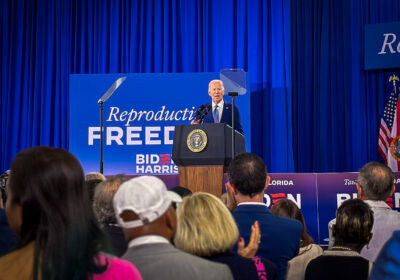Smoking out the facts

Research shows hookah exposes smokers to more carbon monoxide, tar and nicotine than cigarettes. PHOTO ILLUSTRATION/ADAM MATHIEU
Contrary to popular belief among college students, hookah smoking could be significantly more dangerous than many assume, according to a recent USF Health study published by the Centers for Disease Control and Prevention (CDC).
Surveying around 500 USF students, the study found that smoking hookah is perceived as less harmful than smoking cigarettes.
Half of those surveyed believed hookah was less dangerous, while another 25 percent were unsure of the dangers of hookah or believed it wasn’t dangerous at all.
The study shows that students aren’t fully aware of the impact of hookah smoking, said Shams Rahman, a USF doctoral student in epidemiology and the lead author of the study.
“Half of the people we surveyed who were smoking (hookah) were doing so for one hour or more,” he said. “This exposes you to the same (danger) as roughly 100 cigarettes.”
The study found that among those who smoke regularly, 55 percent smoke once a month and about 40 percent smoke weekly.
One session of hookah exposes the user to up to six times more carbon dioxide, which inflames the lungs, than one cigarette, according to the study.
Hookah smokers are also exposed to significantly higher doses of tar and nicotine, the respective cariogenic and addictive chemical associated with cigarette smoking.
Of the students surveyed, 54 percent reported having smoked hookah, and 16 percent reported ongoing hookah use. Rahman said this statistic particularly alarmed him.
“Prevalence is very high,” he said. “The important thing about this finding is that you can see that it is catching up with cigarettes.”
Roughly a third of college students and about a quarter of U.S. adults smoke cigarettes, according to the CDC. In other parts of the world, such as the Middle East where hookah was popularized, it is as common as cigarette smoking.
Due to increased media and scientific discussion of hookah health hazards, some students are becoming increasingly aware of the dangers. One such student is Joy Dresser, a freshman majoring in anthropology, who said she saw a poster in Student Health Services about the risks of hookah smoking.
As a smoker of both cigarettes and hookah, she said she is conscious of the chemicals in both methods of tobacco consumption. She said others don’t always know about the dangers in shisha, the flavored tobacco smoked in a hookah pipe.
“Even though there is a study that says hookah is just as bad for you as smoking cigarettes, my friends who smoke only hookah don’t believe it,” Dresser said. “They think it’s a myth or propaganda. I haven’t met anyone who doesn’t smoke hookah because it’s as bad as cigarettes.”
Other students did not consider the impact of hookah smoking. Kailey Whitton, a sophomore biomedical sciences major and a cigarette smoker, said she was surprised to learn about this impact, though she said it made sense.
“I definitely feel the physical effects of it,” she said. “Yesterday I smoked hookah for probably an hour and a half, and I felt it. I can feel that I’m not breathing normally.”
This information may become common knowledge as more research is done on the effects of hookah smoking and the impact of the activity. Rahman said this study is the first of its kind in Florida and one of the first in the U.S.
Rahman believes studies like this need more funding and more publicity. There are no anti-hookah advertising campaigns like those for cigarettes or marijuana, Rahman said. Without them, he believes students won’t understand the effects of hookah smoking.
“The (hookah) smoke feels smooth and nice. So you may have a false feeling that it’s not like cigarettes,” he explained. “Also, it’s a communal activity. There are some restaurants where you can order nice food and then order a hookah with friends. Those are probably some factors why people don’t know the health effects.”
Studies investigating hookah are in somewhat of a race against time as the activity becomes more popular and more businesses that feature hookah smoking open every year.
More than 90 percent of USF students survey said they knew of a hookah bar within 10 miles of their home. An estimated 3,000 hookah cafes opened in the U.S. just in the past decade.
Rahman said this research is more complicated than that of cigarettes in the last century because of the great variation in the size and types of hookah devices and the time spent smoking.
However, he believes that with better funding and different types of studies, researchers can make great gains in learning about hookah.
“This is just a drop in a bucket,” Rahman said.






